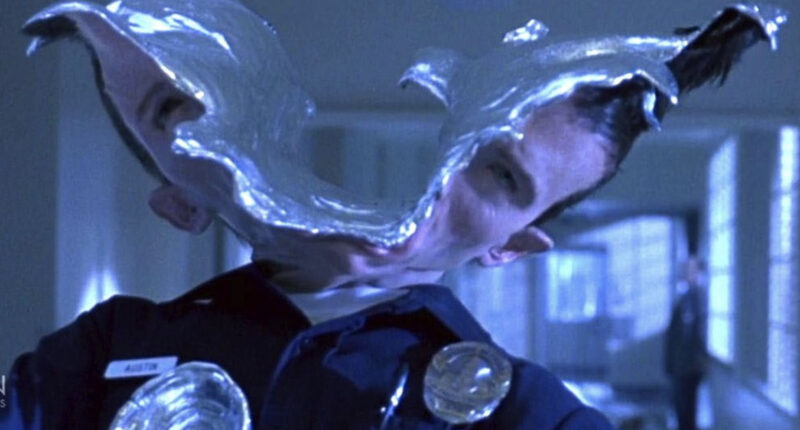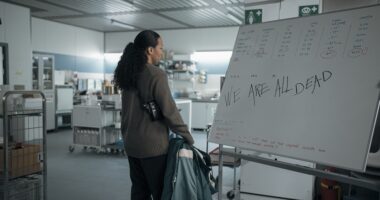Forrest Gump (1994)
In the three decades since its triumphant Academy Award-winning run, Forrest Gump has only gone down in public opinion. Modern viewers may question its conservative politics and Boomer nostalgia-baiting, but no one can take exception with Forrest Gump‘s special effects.
The trick of putting Tom Hanks‘ idiot savant into news reels with Richard Nixon and John Lennon means nothing in an age of deep-fakes, but it still works pretty seamlessly to the modern eye. Even better is everything involving Lieutenant Dan, for which Ken Ralston and his team at ILM digitally removed Gary Sinise’s legs to make the actor appear paraplegic. Thanks to their work, Forrest Gump keeps its gaze set on the past without distracting viewers with futuristic razzle-dazzle.
The Mask (1994)
Like Jurassic Park, The Mask uses much less CGI than one would expect. Unlike Jurassic Park, most of those non-CG effects are all the work of one man, Jim Carrey and his incredible face. Still, Carrey’s rubber-faced tour de force shouldn’t distract from how well ILM animation director Wes Takahashi and his team turned Carrey into a proper cartoon.
Unlike so many of the entries on this list, the effects in The Mask do not look realistic, but that’s the point. The abilities that Carrey’s mousey Stanley Ipkiss gets when he dons the titular mask are supposed to feel weird, and The Mask still feels like we’re watching a Tex Avery cartoon invade the real world.
Babe (1995)
According to the special effects folks at Pixar, it’s much easier to animate non-human things, including animals, than it is to animate humans, because we viewers know too well what humans should look like. But as ’90s hits such as Anaconda and Jumanji demonstrated, it can be pretty darn hard to make effective CG animals as well.
Which is just one of many reasons that Babe, directed by Chris Noonan and co-written by George Miller, feels like such a miracle. The animals on Hoggett Farm look like actual pigs, dogs, and sheep, even when they speak with the voices of Christine Cavanaugh, Hugo Weaving, and Miriam Flynn. Thanks to the work of effects houses Rhythm & Hues Studios, Animal Logic, and (of course) Jim Henson’s Creature Shop, Babe manages to imbue the animals with personality (unlike, say, modern Lion King movies), so that the creatures are actually delightful to watch.









